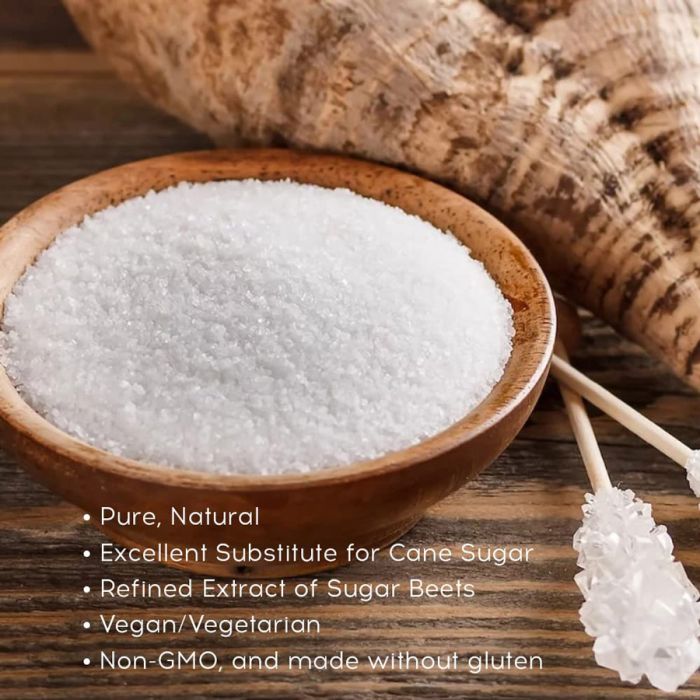Understanding beet sugar vs cane sugar helps consumers make educated choices about their diet.
Understanding beet sugar vs cane sugar helps consumers make educated choices about their diet.
Blog Article
Discover the Uses and Perks of Beet Sugar Vs Cane Sugar in Your Daily Diet Plan
Exploring the unique qualities of beet and cane sugar exposes more than simply their sweetening abilities; it highlights their unique influences on health and wellness and cooking arts. Beet sugar, known for its refined flavor, is typically favored in delicate desserts, whereas cane sugar, with its hint of molasses, includes richness to robust recipes. Each kind holds its very own nutritional account and glycemic implications, welcoming a much deeper understanding of their functions in a balanced diet plan and lasting usage methods.
Beginning and Manufacturing Processes of Beet and Cane Sugar

The distinct environments and dirt kinds needed for growing sugar beets and sugarcane add to distinctions in their cultivation techniques and geographic circulation, influencing the business economics and sustainability of their manufacturing. beet sugar vs cane sugar.
Nutritional Contrast Between Beet Sugar and Cane Sugar
Regardless of originating from various plants, beet sugar and cane sugar are nutritionally extremely similar, both mostly containing sucrose. Each provides regarding 4 calories per gram, converting to approximately 16 calories per tsp. Structurally, both sugars are made up of roughly 99.95% sucrose, with marginal quantities of other materials like dampness and trace element, which do not considerably change their dietary accounts.

Ultimately, when selecting between beet sugar and cane sugar based on dietary web content alone, both deal the same advantages and drawbacks as they are essentially kinds of the same molecule-- sucrose, offering quick energy without other nutrients.
Effect On Health And Wellness: Glycemic Index and Caloric Content
Checking out even more right into the results of beet sugar and cane sugar on wellness, it is crucial to consider their glycemic index and caloric web content. The glycemic index (GI) of both beet and cane sugar is hop over to these guys around 65, classifying them as high-GI foods, which can cause fast spikes in blood glucose degrees.
Each kind of sugar contains around 4 calories per gram, making their calorie content matching. For those keeping track of caloric consumption, particularly when taking care of weight or metabolic health and wellness conditions, comprehending this equivalence is vital (beet sugar vs cane sugar). Too much usage of any type of high-calorie, high-GI food can add to health and wellness concerns such as obesity, heart condition, and insulin resistance.
Environmental and Economic Considerations of Sugar Production
Beyond health and wellness impacts, the manufacturing of beet and cane sugar likewise raises substantial ecological and economic worries. Sugar beet farming often tends to call for cooler environments and has a reduced geographical impact contrasted to sugar cane, which grows in exotic areas.
Furthermore, using chemicals and plant foods in both beet and cane sugar growing can cause soil deterioration and pollution, further impacting biodiversity and local water bodies (beet sugar vs cane sugar). The choice in between read this post here growing sugar beet or cane frequently hinges on regional ecological conditions and economic factors, making the sustainability of sugar production a complex problem
Culinary Applications and Flavor Differences
While the environmental and economic aspects of sugar production are certainly considerable, the option between beet and cane sugar also affects cooking applications and taste profiles. Beet sugar, acquired from the sugar beet plant, is known for its remarkably neutral taste. This makes it a flexible active ingredient in cooking, where it does not change the flavor of other elements. It liquifies quickly and is suitable for usage in cakes, cookies, and pastries.
Walking cane sugar, drawn out from sugarcane, commonly retains molasses traces, which pass on an unique richness and depth. This mild molasses flavor boosts the complexity of baked goods, sauces, and marinates. It is particularly favored in items where a caramel undertone is desired, such as in brownies or gingerbread. The minor variation in wetness web content in between beet and cane sugar can affect the structure and consistency of meals, making cane sugar a recommended option for details recipes that profit from its distinct residential properties.

Final Thought
In final thought, both beet and cane sugar have distinctive websites origins and manufacturing processes, using comparable dietary profiles with small distinctions in sodium content and taste. While their influence on health and wellness, especially regarding glycemic index and calories, is comparable, the option between them commonly steams down to environmental, economic factors, and specific cooking demands. Recognizing these elements can direct consumers in making educated choices that align with their wellness objectives and flavor preferences.
Report this page